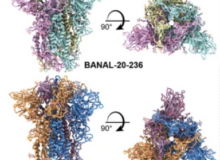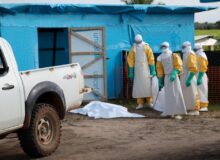Book Author: Robyn O’Brien (with Rachel Kranz)
Reviewed by Jonathan Latham, PhD (The Bioscience Resource Project)
Allergies and food intolerances are serious medical conditions. They are the cause of many deaths and hospitalizations annually and they predispose to other illnesses. They can also exact a high toll in other ways since worry, inconvenience and lost opportunities can significantly harm the quality of lives.

The incidence of these disorders appears to be increasing rapidly among children and adults in Western countries. Reputable researchers describe allergy incidences as ‘skyrocketing’. Nevertheless, despite the abundance of anecdotal evidence and the seriousness of these illnesses, research on these trends is remarkably sparse. What there is supports the anecdotes, however. Peanut allergies in the US more than doubled between 1997 and 2002 and one in four children now has an allergy of one kind or another. Official scientific uncertainty is worsened by the absence of a convincing explanation for allergies and intolerances whose symptoms are surprisingly diverse. Many family practitioners fail to identify and diagnose these conditions, and when they do, the help offered by most is limited, mostly to anti-inflammatory medications.
This is a knowledge vacuum that leaves ample room for self-educated citizen scientists. No special equipment is required, only an ill patient, a willingness to temporarily avoid certain foods or ingredients, and a capacity for careful observation. Personally known to this writer is a person who has cured themselves through food elimination of the supposedly incurable autoimmune disease Lupus Erythematosus, another who discovered her self-harming tendencies arose from gluten and a third who cured a lifelong gastric disorder. Two of these three cases were self-diagnosed. It is probable that many tens of thousands of people have been through this self-diagnostic process and one of them is Robyn O’Brien.
Robyn O’Brien is the mother of four children, all with allergies. Their allergies are primarily against staples of the US diet, including corn, milk and eggs. But perhaps what is most unusual about Robyn O’Brien was her decision to conduct some in-depth research and to share her story. She wrote this book (with Rachel Kranz) and started the website www.AllergyKids.com.
The thesis of The unhealthy truth is that food allergies and intolerances are a product of defects in the industrial food system. Something has happened to food that is causing profound disturbances to our physiology. It is a reasonable thesis, and weaving together her personal story with the scientific and political ones is a refreshing approach since too often they are separated. And O’Brien excels at uncovering fascinating facts. Particularly interesting is the story of the Food Allergy and Anaphyllaxis Network (FAAN), the premier US allergy non-profit and its numerous and disturbing food industry connections. These connections may have a lot to do with why allergy research is today under-resourced, most particularly in the US. Another fact you probably also don’t know is that the German Federal Institute for Risk Assessment recommends that soy baby formula, which constitutes approximately 20% of the US market, should be fed to infants only as a last resort, and even then only under strict medical supervision? And had you considered that the privatised medical system of the United States is probably a chief contributor to the dearth of preventive research? Because, as Robyn O’Brien puts it “In Europe, every time you visit the doctor, the government feels your pain.”
Food allergies are not an easy subject to write about, however, because our understanding is deeply inadequate. It is not always clear, for example, where intolerance ends and allergy begins. Also not clear are the connections to other diseases such as asthma or even behavioural disorders such as ADHD, depression and autism. These difficulties show up in the structure of the book. For instance, it is not clear that the root cause of food allergies is always, or even ever, food. It may be that some other environmental factor is the trigger and that specific allergies are the symptom of immune dysfunction. That an important story is not a tidy affair is not the author’s fault, however. Far more interesting are the insights she distills and the stories she finds.
Ultimately, The unhealthy truth does not document every problem in the food system, nor can it conclusively demonstrate that food safety flaws cause allergies. What it does do is demonstrate how far one determined person can go if they’re not afraid of what they might find. More than anything this book illustrates how ineffectual have been the multi-billion dollar government science agencies charged with identifying, researching and solving those same problems. So conclusively have they been gagged and bound by Congress, lobbyists and Presidents, they not only cannot take regulatory action when it’s warranted, they no longer are able even to seek out, identify and measure problems that are obvious to millions of ordinary citizens.
ISBN: 978-0-7679-3071-0 Publisher: Broadway books (2009)



